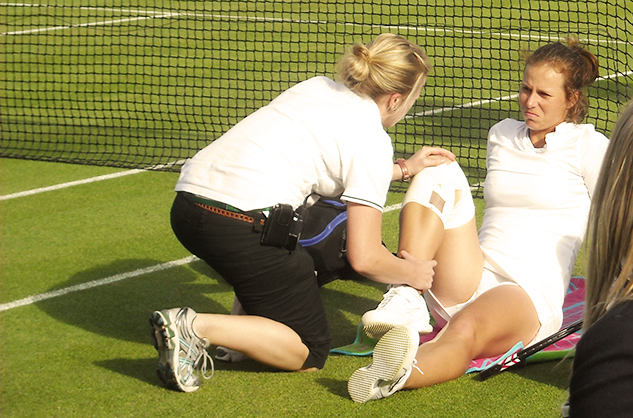Pain, Set & Match: Common Tennis Injuries
Published on
21 Jan 2016

Call us on: (03) 9975 4133
The Australian tennis season is in full flight, with the Australian Open Grand Slam in full flight. As the temperature rises and we hit the hottest peak of Australia’s summer, it seems that tennis fever seems to grip the nation with a similar kind of ferocity.
Luckily, “tennis fever” isn’t the kind of affliction that will keep you from having a hit down at the local nets.
Unfortunately though, there are a range of injuries and issues that are likely to leave you caught up in some trouble on the court. Especially if it’s been a while since your last hit.
Tennis demands aerobic fitness, power, speed and agility. Injuries are common among athletes as they stretch their bodies to the limit in an aim to achieve the winning edge.
The key to avoiding many of these problems is understanding how – and why – they occur. Let’s take a look at some common tennis injuries and how you can keep your game from faulting.
Remember, if any of these seem familiar, an appointment with one of our physiotherapists can have you back with the racquet in hand. And, in far greater comfort.
Repetition: a common cause of discomfort
Many of the injuries we see in the clinic at this time of year are due to overuse of essential muscle groups and joints, with the remainder caused by specific trauma or acute in-game incidents. Overuse injuries will usually affect the ankles, knees and hips. This is often due to the repeated pivoting and quick changing of direction that’s required when playing on a hard surface – the ball moves faster, so you have to as well.
Elsewhere, the high repetition, velocity and consistent reliance on relatively small muscles groups used in swinging a racquet means that shoulder, wrist and elbow injuries are also a common issue. Overhead strokes used in service and smash-shots can lead to irritation around the shoulder joint, with tendon, muscular, bursa and joint surfaces potentially contributing to discomfort.
The dreaded “tennis elbow”
Lateral epicondylitis, or “tennis elbow” as it’s known down at the local club, has to be one of the most well-known and storied of the common tennis injuries. It is caused by inflammation of forearm tendons where they insert into the outer aspect of the elbow.
Excessive gripping activities such as tennis cause damage to the tendon tissue. It is estimated that 40% of tennis players experience tennis elbow – hence its name. However, the condition is common in any activity that requires repeated loading tasks such as hammering, weightlifting or driving.
General issues
Muscle strains and stress factors plagues athletes of almost every sport, and tennis players are no exception. Significantly increased playing times are a common cause of stress fractures – when your muscles tire from overexertion, then more stress is placed on other areas of your physiological structure. So if you’ve gone from playing six games to six sets, it could present as an issue.
Muscle strains are usually the result of quick, sudden moves. They can be treated with the RICE principle: rest, ice, compression and elevation. For a more serious strain or a tear, book an appointment with one of our team members for more specialised treatment.
How can a physio help?
Many of the tennis injuries we see in clinic can be prevented by engaging in specific exercises for muscle strength, mobility and endurance.
For example, recent research suggests that isometric exercises are the most effective treatment techniques for the early stages of an acute and painful tennis elbow.
Isometric exercises involve the contraction of the muscle without muscle shortening or elongation therefore they are able to provide “strain.” Strain is important for helping build load tolerance without pain or fatiguing the muscles.
In most cases, analysing and improving technique can also be a factor in mitigating the incidence of these kinds of issues.
A certain level of joint soreness is often associated with playing tennis, but that shouldn’t be the case. When playing tennis, the key biomechanical chain starting at the pelvis and trunk should ideally work in conjunction with the shoulder blade. This provides a stable base for the upper limb to move from, ensuring that individual joints aren’t overused or overloaded.
With the right guidance (from coaches and trainers where necessary), our physiotherapists can improve your technique, mobility, strength and racquet control. In turn, you should improve your stability, power production and muscle efficiency.
So what are you waiting for? If you’re serious about your tennis, book an appointment with one of our specialists today and you’ll be making clear net gains in no time.


